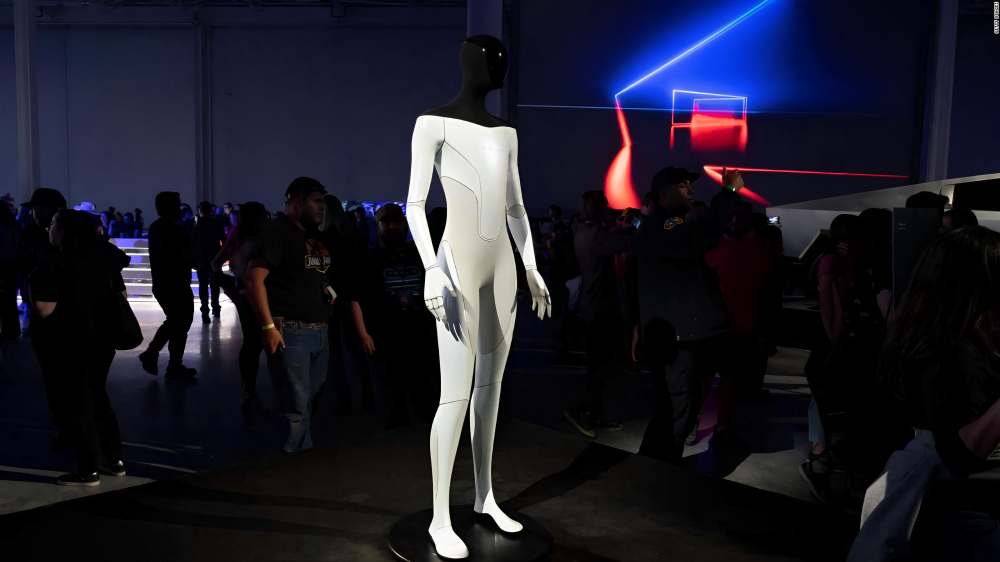At the forefront of technological advancements, humanoids have emerged as a remarkable innovation in the field of robotics. Humanoids: Pioneering the Next Generation of Robotics.
These sophisticated machines, designed to resemble humans in both appearance and behavior, are poised to revolutionize various industries. In this article, we explore the fascinating world of humanoids and their potential to shape the future of robotics.
Where cutting-edge technology and human-like characteristics converge to create a new paradigm in robotics. In this article, we delve into the depths of this revolutionary field, exploring the remarkable advancements that have propelled humanoids to the forefront of innovation. With their uncanny resemblance to humans and astonishing capabilities, humanoids are poised to transform industries and redefine the boundaries of what machines can achieve. Join us on this captivating journey as we uncover the evolution, applications, and boundless potential of humanoids, the trailblazers of the next generation of robotics.
Evolution of Humanoids
Humanoids have come a long way since their inception. Initially, they were mere conceptual ideas inspired by science fiction literature and films. However, with advancements in engineering and artificial intelligence, humanoids have transitioned from the realm of imagination to tangible reality.
Early Humanoids
Early humanoids were characterized by their limited capabilities and basic functionalities. They often had a stiff and rigid appearance, lacking the fluid movements and lifelike interactions we see today. These prototypes served as crucial stepping stones for further advancements in humanoid technology.
Contemporary Humanoids
In recent years, significant progress has been made in developing highly advanced humanoids capable of performing intricate tasks. These modern humanoids possess a wide range of abilities, including walking, running, grasping objects, and even displaying human-like emotions. State-of-the-art sensors, actuators, and algorithms enable them to perceive their surroundings, adapt to changes, and interact with humans and their environment seamlessly.
Applications of Humanoids
The versatility and potential of humanoids have opened up numerous opportunities across various industries. Let’s explore some of the remarkable applications where humanoids are making a significant impact:
Healthcare
Humanoids are poised to revolutionize healthcare by assisting medical professionals in a multitude of ways. With their precise movements and dexterity, humanoids can support surgeons during complex surgeries, reducing the risk of errors and improving patient outcomes. Additionally, they can serve as caregivers for the elderly and individuals with disabilities, providing companionship and performing routine tasks.
Manufacturing and Logistics
Humanoids are becoming valuable assets in the manufacturing and logistics sectors. Equipped with advanced sensors and computer vision, they can perform intricate assembly tasks with high precision, boosting production efficiency. Moreover, humanoids are adept at navigating complex environments and can handle logistics operations such as packing, sorting, and delivering goods.
Education and Research
Humanoids have found their way into educational institutions, aiding in research and teaching. They can simulate human behavior and engage students in interactive learning experiences. Humanoids equipped with natural language processing capabilities can even communicate and interact with students, making education more personalized and engaging.
The Future of Humanoids
The potential of humanoids is immense, and their evolution shows no signs of slowing down. As technology continues to advance, we can expect the following developments in the field of humanoids:
Enhanced AI Capabilities
Future humanoids will boast enhanced artificial intelligence capabilities, allowing them to learn and adapt more efficiently. Through machine learning algorithms, they will be able to acquire new skills and improve their performance over time. This will enable humanoids to carry out complex tasks with greater precision and autonomy.
Increased Integration in Society
As humanoids become more sophisticated, they will find increased integration in our daily lives. We can envision a future where humanoids serve as personal assistants, companions, and even household managers. With advancements in natural language processing, humanoids will be able to understand and respond to human commands, making them valuable assets in homes and workplaces.
Collaborative Human-Robot Interaction
The future of humanoids lies in establishing seamless collaboration between humans and robots. Through advanced sensors and algorithms, humanoids will be able to understand human gestures, facial expressions, and emotions, fostering more intuitive interactions. This collaborative partnership will lead to improved efficiency and productivity across various industries.
Humanoids represent a remarkable convergence of robotics, artificial intelligence, and human-like characteristics. Their ability to mimic human behavior and perform complex tasks opens up a world of possibilities in healthcare, manufacturing, education, and beyond. As humanoids continue to evolve and integrate into society, they will undoubtedly play a pivotal role in shaping the future of robotics. Embracing this technological revolution and harnessing the potential of humanoids will pave the way for a new era of innovation and

